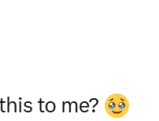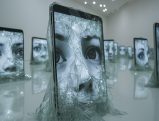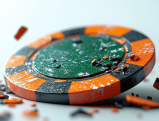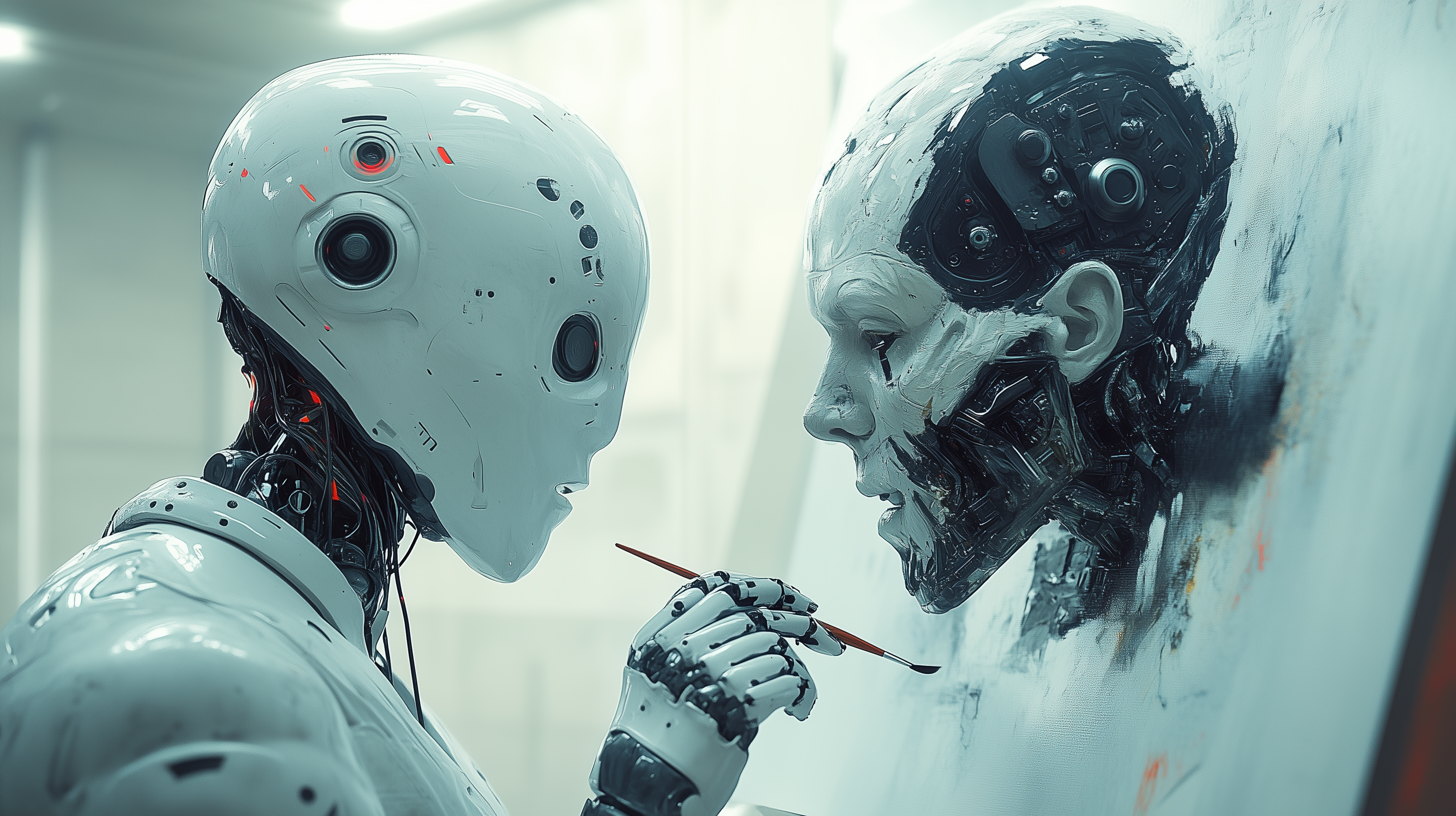
A groundbreaking lawsuit against the U.S. Copyright Office challenges the denial of copyright for an artist's AI-assisted artwork. The case's outcome could redefine creativity and authorship in the digital age, reshaping copyright standards for AI-generated works.
by LawInc Staff
September 29, 2024
The lawsuit brought by Jason Allen against the U.S. Copyright Office over the denial of copyright registration for his AI-assisted artwork “Théâtre D’opéra Spatial” has garnered significant attention in the creative community. As AI tools like Midjourney become more prevalent, the case raises critical questions about the future of copyright law and protection for AI-assisted works.
This guide breaks down everything you need to know about Allen v. Perlmutter, from the key facts and legal issues to the potential implications for artists, innovators, and policymakers. Learn about the plaintiff’s arguments, the Copyright Office’s position, and the ongoing debate over how copyright law should adapt to the rise of artificial intelligence.
Whether you’re an artist experimenting with AI tools, a legal professional grappling with these novel issues, or a curious observer of how technology is reshaping intellectual property law, this overview provides the insights and analysis you need to understand this pivotal case.
1. Basic Facts of the Case
-
- Plaintiff Jason Allen: A Colorado artist who used AI tools to create the artwork at the heart of the case.
- AI Artwork “Théâtre D’opéra Spatial”: Created by Allen using Midjourney, then upscaled with Gigapixel AI and touched up in Photoshop.
- Copyright Registration Denial: In 2022, the Copyright Office refused to register the work, deeming it lacked human authorship.
- Administrative Appeal: Allen’s requests for reconsideration were denied, exhausting administrative remedies.
- Federal Lawsuit Filed: In Sept. 2024, Allen sued the Copyright Office in Colorado federal court, seeking reversal of the refusal.
Key Exhibits:
-
- Exhibit 1: Facebook post showing another artist’s unauthorized use of Allen’s work, claiming “no theft occurred” since “IP never vested in Jason.”
- Exhibit 2: Screenshot of the work being sold on Etsy without Allen’s permission.
- Exhibit 3: Email correspondence detailing Allen’s back-and-forth with the Copyright Office examiner and the 624 prompts used.
- Exhibit 4: Copyright Office’s initial refusal to register the work in December 2022.
- Exhibit 5: Allen’s first request for reconsideration in January 2023.
Impact of Registration Denial:
-
- Without copyright protection, Allen has limited recourse against rampant infringement and unauthorized uses of his artwork.
- Third parties are exploiting the work commercially, such as selling unauthorized reproductions on online marketplaces like Etsy.
- Some are arguing Allen has no ownership rights since the “IP never vested” in him, creating a legal void where no one seems to own the work.
- This threatens Allen’s ability to control and monetize his own creation, as well as innovators’ incentives to use AI tools to generate new works.
- Demonstrates need for clearer standards around AI authorship to balance protecting artists’ rights with encouraging creative applications of AI.
Significance of the Case:
-
- Deciding AI’s Role in Authorship: Does using AI tools to create art mean the human artist isn’t the “author” of the resulting work?
- Adapting Copyright Law for AI Era: How should copyright law and policy evolve to address the increasing use of AI in the creative process?
- Balancing Incentives for Innovation: What balance between protecting artists’ rights and encouraging creative AI use will best promote innovation?
- Potential Sea Change in IP Law: The ruling could dramatically reshape copyright law’s human authorship requirement for other AI-assisted works.
- Guidance Needed for Artists & Innovators: The creative community needs clear guidelines on AI’s implications for copyright protection.
2. Dive into Allen’s Creative Process Using AI
-
- Imagining the Artwork: Allen envisioned an image of women in Victorian ball gowns and space helmets staring through a portal.
- Using Midjourney AI: Allen used Midjourney to execute his vision, giving it highly detailed prompts to guide the output.
- Lengthy Iterative Process: Allen went through 624 prompts, reviewing Midjourney’s outputs and refining instructions each round.
- Raw Outputs to Polished Work: After selecting the best raw AI images, Allen upscaled them with Gigapixel AI and made final edits in Photoshop.
- Prompts as Detailed Instructions: Allen argues his prompts were not mere suggestions but specific instructions to execute his creative vision.
Allen’s Writing Technique for Prompts:
-
- Be Specific: Use granular details about desired content, style, colors, composition, etc. to guide AI’s interpretation.
- Use Modifiers: Include adjectives to convey mood, style, and emotions to influence the AI’s rendering.
- Iterate & Refine: Study AI’s interpretation of prompts, identify what worked or didn’t, and clarify with each new prompt.
- Word Placement Matters: Experiment with word order to see how it impacts the AI system’s visual emphasis and priority.
- Test & Assess Results: Develop prompting approach through trial and error to learn how to “speak” to the AI to realizes your vision.
Directing the AI Like a Film:
-
- Allen compares his process to a film director guiding a cameraman to capture their vision through multiple takes.
- The 624 prompts are like a director giving a cameraman the same detailed shot instructions over hundreds of takes until it’s right.
- Allen estimates he spent around 114 hours on the prompt-based iterative process and subsequent edits to bring his imagined scene to life.
- He argues Midjourney is a complex tool for manifesting his vision, not an autonomous creative entity that generated the work on its own.
- Like a photographer setting up a shot, Allen conceived of the scene and used AI to generate a visual expression of his mental picture.
Insight into Creative Control:
-
- Importance of Prompts: Allen’s complaint illustrates the thought, care, and research that goes into crafting effective prompts to guide AI imagery.
- AI as Artist’s Tool: Like a camera or digital design program, Allen used Midjourney to execute his artistic concepts and instructions.
- Human-AI Collaboration: The intricate back-and-forth between Allen and Midjourney shows AI’s results depend heavily on human creative input.
- Artist’s Intentionality: Allen’s 624 prompts demonstrate a dogged intent to manifest a specific mental image, not just wishful suggestions to AI.
- Time & Effort to Create: The hours Allen spent directing the AI and refining the work underscore his authorial role, akin to a photographer or director.
3. Explore the Key Legal Issues & Arguments
-
- Authorship & Human Creativity: Does Allen’s creative control over the AI process using prompts make him the work’s “author” under copyright law?
- AI Does Not Operate Autonomously: Plaintiff argues AI is not an independent creative entity but a tool directed by human instructions and guidance.
- Flawed Human Authorship Analysis: Copyright Office failed to recognize how extensively Allen controlled Midjourney’s “imagination” with prompts.
- Reliance on Non-Binding Agency Opinions: Compendium rules on authorship aren’t statute and must yield where they conflict with Copyright Act’s purpose.
- Creative Intent from Artist’s Mind: Allen conceived of the artwork and executed that vision using AI, like an artist using any other tool.
Feist’s “Modicum of Creativity” Standard:
-
- Allen argues the work easily meets Feist’s low bar for creativity required for copyright protection (a “creative spark” is enough).
- The USCO failed to explain how the work doesn’t meet this standard, despite its originality in both conception & execution.
- Like the photographer meticulously crafting a photo in Burrow-Giles, Allen’s 600+ prompts show a clear creative vision.
- Complaint questions how USCO could find the work not minimally creative given its uniqueness & the effort to bring it to fruition.
- Argues Feist requires finding of sufficient (human) creativity here as a matter of law based on undisputed facts of Allen’s process.
Adapting Copyright Law for New Technologies:
-
- Allen says copyright law is meant to adapt to new tech, as it did for photography, to protect artists’ “writings” (creative expressions).
- Argues the rise of AI art is akin to past advances like cameras or digital music – courts found ways to protect those novel works.
- Stresses need for technologically neutral copyright standards so as not to punish artists for embracing innovative new tools.
- Says USCO’s focus on what AI contributes vs. human input will chill creative development if taken to extreme.
- Argues the Copyright Act is flexible enough to find Allen is the author/owner here as the human mastermind behind work’s creation.
Potential Impact on Generative AI:
-
- Chilling Effect on Artists: If using AI tools makes resulting works uncopyrightable, it punishes artists for innovating and experimenting.
- Deterring Creative AI Development: Artists & tech companies may shy away from creative AI systems if no IP rights in outputs.
- Ownership Void Enables Infringement: With no one to enforce copyright in AI works, nothing stops rampant copying with impunity.
- Reduced Incentive to Publish AI Art: If artists can’t monetize or control AI works, they may keep them private, reducing public access.
- Need for Tailored AI Authorship Rules: Allen’s case may spur new standards weighing artists’ input vs. AI’s to decide ownership.
4. Critique the USCO’s Registration Decision
-
- Arbitrary & Capricious Standard: Allen argues denial is so unreasonable under the Copyright Act, it’s illegal under the Administrative Procedure Act too.
- Contrary to Statutory Mandates: Refusal undermines the Copyright Act’s core purpose of protecting creative original works of authorship.
- Inconsistent With Legal Precedent: Prior cases like Burrow-Giles and Feist support finding Allen’s process & work satisfy authorship.
- Failure to Explain Rationale: USCO didn’t adequately address Allen’s evidence of how extensively he directed the AI with prompts.
- Misreading “Human Authorship” Rule: Plaintiff says agency improperly extended its rule to erase artists’ authorship via AI tools.
Compendium’s “Human Authorship” Test:
-
- Allen says the agency misapplied its own Compendium test for what’s “human” vs. “machine” authorship.
- Test asks if a machine (1) conceived of the work’s traditional elements of authorship & (2) executed them too.
- He argues AI did neither here – he conceived of the key creative elements & directed the AI to execute his vision.
- Claims USCO ignored how prompt-writing process is a skill to turn mental concepts into something AI can manifest visually.
- Asserts if either conception or execution is human (and both were here), work qualifies as human-authored per USCO’s own test.
Improper & Inconsistent Demands:
-
- Allen argues USCO made inappropriate demands for details of his process it wouldn’t ask of non-AI artists.
- Notes agency doesn’t require authors to log their creative process, research, influences, or intentions to register works.
- Suggests it violates Copyright Act’s tech-neutral framework to put AI artists to higher proof standard re authorship.
- Also argues USCO treated his Midjourney use differently than Photoshop edits in terms of counting it as authorship.
- Asserts USCO is treating newer AI-based tools as less “authorial” than established digital tools with no legal basis.
Opinion Built on Generative AI Fears?
-
- Influence of Controversy: Allen thinks public backlash to his state fair win for AI art may have colored USCO’s review.
- Confusion Over AI’s Role: Suggests USCO’s grasp of how Midjourney works and artist’s input may be clouded by anti-AI biases.
- Discomfort With AI Capabilities: Argues impressive outputs challenge notions of human skill needed for copyright, triggering knee-jerk rejection.
- Speculation Over Improper Motives: Complaint hints USCO’s harsh stance may aim to make example of Allen’s case to chill AI art.
- Objective Review Skewed: Says USCO should assess work itself for copyright status – not how/why made – but appears swayed by anti-AI views.
5. Understand the Causes of Action & Relief Sought
-
- APA Violation Claim: USCO’s refusal was arbitrary, capricious, abuse of discretion & contrary to Copyright Act.
- Copyright Act Violation Claim: Work qualifies for protection as original work of human authorship fixed in tangible medium.
- Exceeds Statutory Authority: USCO’s stance on “human authorship” requirement is overreach not supported by Copyright Act.
- Injunction Ordering Registration: Allen wants court to find USCO violated APA & Copyright Act and order agency to register the work.
- Attorney’s Fees & Costs: Seeks reimbursement of reasonable attorney’s fees & expenses incurred in bringing lawsuit.
Dissecting the APA Claim:
-
- APA lets courts set aside agency actions found to be arbitrary, capricious, abuses of discretion, or illegal.
- Allen says USCO’s refusal is all of the above b/c it misinterprets Copyright Act to deny protection to AI-assisted work.
- Argues Compendium’s “Human Authorship” section relied on to refuse registration conflicts with Copyright Act’s mandates.
- USCO’s reading of rule ignores how extensively Allen controlled AI’s “creativity” to express his own creative vision.
- Asserts USCO abused its discretion by imposing higher authorship proof burden on AI artists than others.
Key Elements of Copyright Claim:
-
- Copyright Act grants protection to “original works of authorship fixed in any tangible medium of expression.” 17 USC 102(a)
- Allen contends his work meets this standard b/c it’s product of his creative vision expressed via AI tools as a jpeg.
- Argues low Feist creativity bar is clearly met by unique combination of visual elements he conceived of & directed.
- Work satisfies “fixed in tangible medium” prong as a digital image — just like other visual works courts have protected.
- Claims authorship requirement met since Allen masterminded work and controlled AI’s execution of his vision, like a director.
Justifying the Relief Requested:
-
- Court Has Authority: Can set aside arbitrary & capricious agency actions under APA and compel agency action per Act.
- Registration Required to Sue: Allen needs work registered to protect it from ongoing infringement in court.
- Rampant Copying & Lost Revenues: Continued denial of registration allows unchecked copying & blocks licensing.
- Efficient Resolution Needed: Declaratory judgment provides most direct route to deciding AI authorship issues.
- Fees & Costs Authorized: Both APA & Copyright Act permit award of attorney’s fees & costs to prevailing plaintiffs.
Summary
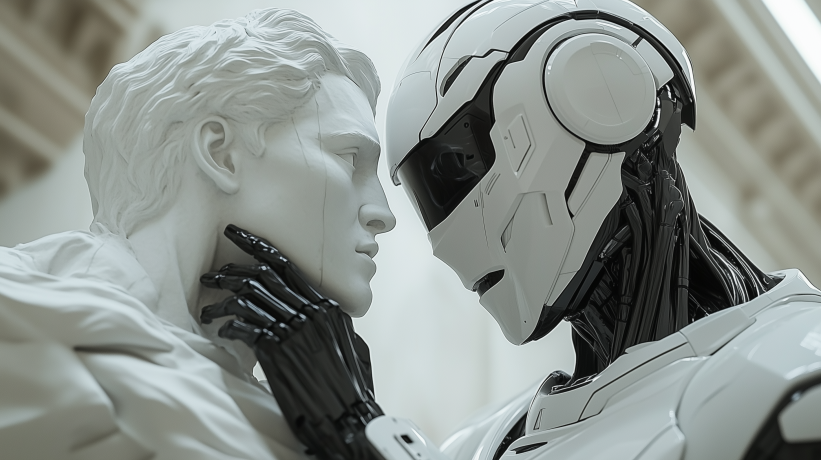
Did You Know? Allen’s artwork “Theatre D’Opera Spatial” won 1st place in Colorado State Fair’s fine art competition, igniting a fierce debate over whether AI-generated works qualify as “art” and how they impact human creators.
Jason Allen’s lawsuit against the U.S. Copyright Office could prove a landmark test case for AI-assisted works under copyright law. At stake is whether artists can secure protection for works created with the help of AI systems like Midjourney and benefit from the same copyright incentives as traditional artists.
Allen argues his extensive creative control over the AI’s outputs using 600+ detailed prompts to execute his artistic vision makes him the work’s “author.” The USCO counters that Midjourney’s role in generating the work severs the link to human authorship required for protection.
The case’s outcome could dramatically impact artists experimenting with generative AI tools and shape how courts and Congress adapt copyright law to the AI age. Tech companies, digital artists, legal scholars and policymakers are sure to watch it closely.
Test Your Knowledge of Allen v. Perlmutter
Questions: Case Basics & Legal Issues
-
- 1. What AI system did Jason Allen primarily use to create the artwork at issue?
- A) DALL-E
- B) Midjourney
- C) Stable Diffusion
- D) Jasper Art
- 2. How many iterative prompts did Allen use in directing Midjourney to create his work?
- A) Around 50
- B) About 200
- C) Over 600
- D) Less than 10
- 3. What is the name of the AI-assisted artwork at the center of this case?
- A) Theatre D’Opera Spatial
- B) Cosmic Opera Dream
- C) Symphony of Stars
- D) Celestial Stage
- 4. What is the key legal issue at the heart of Allen’s lawsuit against the USCO?
- A) Whether AI-assisted works can qualify for copyright protection
- B) If the USCO followed proper procedures in denying registration
- C) The amount of damages for infringement of Allen’s work
- D) Whether Midjourney has any rights to Allen’s creation
- 5. Which is NOT one of the key standards Allen argues his work meets for copyright protection?
- A) Originality
- B) Fixation in a tangible medium
- C) Substantial similarity to another work
- D) Human authorship
- 1. What AI system did Jason Allen primarily use to create the artwork at issue?
Answers: Case Basics & Legal Issues
-
- 1. B) Allen primarily used the Midjourney AI system to generate the work, with additional edits in Photoshop.
- 2. C) Allen went through over 600 detailed text prompts to guide Midjourney’s generation of the work to match his creative vision.
- 3. A) The artwork Allen sought to register is titled “Theatre D’opera Spatial.”
- 4. A) The central issue is whether Allen’s use of AI tools like Midjourney to create the work precludes copyright protection.
- 5. C) Originality, fixation & human authorship are key copyright requirements – substantial similarity relates to infringement, not initial protection.
Questions: Allen’s Arguments & USCO’s Stance
-
- 1. What does Allen argue his prompt-writing process is analogous to?
- A) An author dictating a story to a typist
- B) A photographer setting up and capturing a shot
- C) A film director guiding a cameraman
- D) An artist sketching out a rough draft
- 2. What key legal precedent does Allen rely on re: the low creativity bar for copyright protection?
- A) Burrow-Giles Lithographic Co. v. Sarony
- B) Feist Publications, Inc. v. Rural Telephone Service Co.
- C) Bleistein v. Donaldson Lithographing Co.
- D) Bridgeman Art Library v. Corel Corp.
- 3. Which past new technology does Allen analogize the current AI issues to?
- A) Digital cameras
- B) Photocopiers
- C) Word processors
- D) Synthesizers
- 4. On what basis does the USCO argue Midjourney undermines Allen’s authorship claim?
- A) Midjourney did the lion’s share of the creative work
- B) Allen didn’t control how Midjourney interpreted his prompts
- C) Prompts are too high-level to qualify as specific direction
- D) All of the above
- 5. Which of the following is NOT a potential implication if Allen loses the case?
- A) Chilling effect on artists’ use of AI tools for fear of losing copyright rights
- B) Reduced investment in development of creative/generative AI systems
- C) AI-assisted works fall into public domain immediately upon publication
- D) Rampant infringement of AI works b/c no one has standing to enforce copyright
- 1. What does Allen argue his prompt-writing process is analogous to?
Answers: Allen’s Arguments & USCO’s Stance
-
- 1. C) Allen likens his prompting process to a film director guiding a cameraman to execute his creative vision.
- 2. B) Feist is the seminal case Allen cites for the proposition that only a “modicum” of creativity is needed for copyright protection.
- 3. A) Allen draws parallels between the rise of digital cameras and the current emergence of AI art tools in copyright.
- 4. D) The USCO’s denial rests on all of these arguments re: Midjourney’s role vs. Allen’s in the work’s creation.
- 5. C) While chilling effects & infringement are risks if Allen loses, the case isn’t about AI works being public domain – no one would own them.
Need Legal Help?
If you need legal assistance, in any field of law, our free concierge service can connect you with experienced attorneys in any practice area and state. Contact us to learn more.
Also See
Court Allows Key Copyright Claims to Proceed in Groundbreaking AI Art Lawsuit
Ctrl+Musk+Delete: Elon’s Strategic Exit from the OpenAI Lawsuit and Its Impact on the Future of AI
Follow LawInc on Instagram
View this post on Instagram


